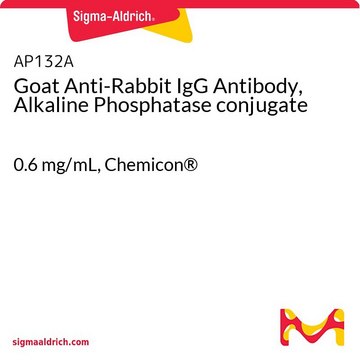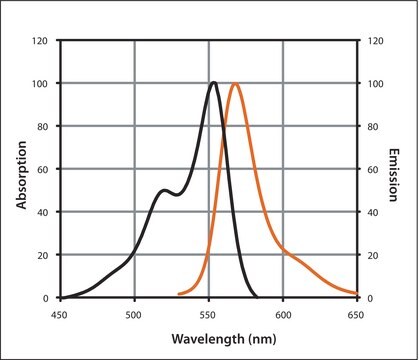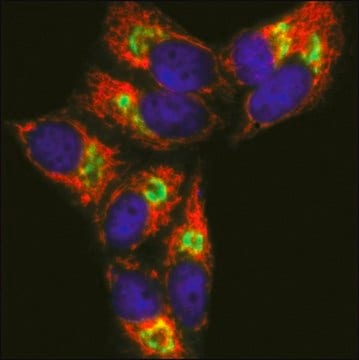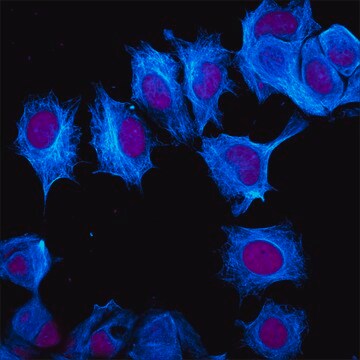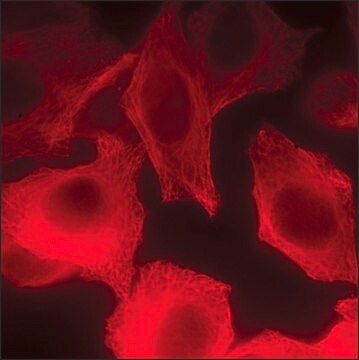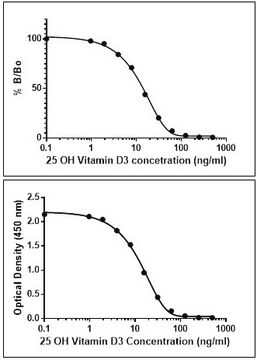General description
Immunoglobulin Y is one of the antibodies produced in birds. It is generally related to mammalian IgG. However, IgY has different characteristics compared to mammalian IgG, for example, IgY does not bind with mammalian complements nor Rheumatoid factor, which are present in mammalian serum and anti-mammalian IgG antibodies. IgG antibodies, which often cross-react to IgG from different mammalian species, exhibit low cross-reactivity to IgY. These characteristics of IgY is beneficial when it is used as a biochemical/clinical reagent. Immunoglobulin Y present in chicken blood serum has the capability to pass across the follicular epithelium of the ovary and aggregate in the yolk during oogenesis. Structurally, IgY and mammalian IgG differ in the heavy chain with the molecular weight of 68,000 and 50,000 dalton, respectively. Mammalian IgG has slightly higher stability compared to IgY.
CF™ 488A is a green fluorescent dye with excitation argon laser line at 488nm. CF™ 488A is minimally charged, thus, it reduces non-specific binding of antibody conjugates. CF™ 488A is a highly water-soluble and pH-insensitive dye with molecular weight of ~710. This dye has absorption/emission maxima at 490/515nm and it is highly photostable.
Specificity
Binds all chicken IgYs (minimal cross-reaction with bovine, goat, guinea pig, syrian hamster, horse, human, mouse, rabbit, rat and sheep proteins)
Immunogen
chicken IgY (H+L)
Application
Anti-Chicken IgY (H+L), highly cross-adsorbed, CF™ 488A antibody produced in donkey has been used in immunohistochemistry.
Features and Benefits
Evaluate our antibodies with complete peace of mind. If the antibody does not perform in your application, we will issue a full credit or replacement antibody.
Learn more.Physical form
Supplied in phosphate buffered saline with 0.05% sodium azide, 50% glycerol and 2 mg/mL bovine serum albumin.
Preparation Note
Protect from light.
Legal Information
This product is distributed by Sigma-Aldrich Co. under the authorization of Biotium, Inc. This product is covered by one or more US patents and corresponding patent claims outside the US patents or pending applications owned or licensed by Biotium, Inc. including without limitation: 12/334,387; 12/607,915; 12/699,778; 12/850,578; 61/454,484. In consideration of the purchase price paid by the buyer, the buyer is hereby granted a limited, non-exclusive, non-transferable license to use only the purchased amount of the product solely for the buyer′s own internal research in a manner consistent with the accompanying product literature. Except as expressly granted herein, the sale of this product does not grant to or convey upon the buyer any license, expressly, by implication or estoppel, under any patent right or other intellectual property right of Biotium, Inc. Buyer shall not resell or transfer this product to any third party, or use the product for any commercial purposes, including without limitation, any diagnostic, therapeutic or prophylactic uses. This product is for research use only. Any other uses, including diagnostic uses, require a separate license from Biotium, Inc. For information on purchasing a license to use this product for purposes other than research, contact Biotium, Inc., 3159 Corporate Place, Hayward, CA 94545, Tel: (510) 265-1027. Fax: (510) 265-1352. Email: btinfo@biotium.com.
CF is a trademark of Biotium, Inc.
Disclaimer
Unless otherwise stated in our catalog or other company documentation accompanying the product(s), our products are intended for research use only and are not to be used for any other purpose, which includes but is not limited to, unauthorized commercial uses, in vitro diagnostic uses, ex vivo or in vivo therapeutic uses or any type of consumption or application to humans or animals.
